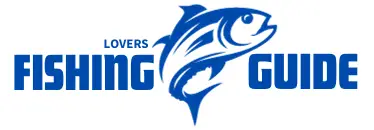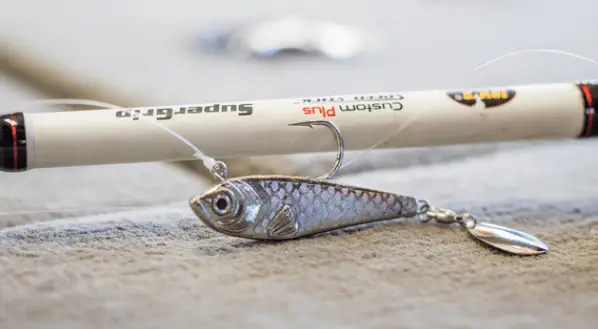The best fishing bait in the world depends on the fish species targeted, but live baits like worms and minnows are universally effective. Anglers often choose bait specific to the local environment and the fish’s natural diet for optimal results.
Discovering the ultimate bait for fishing is an angler’s holy grail. The choice of bait can dramatically affect the day’s success, and while universal baits exist, seasoned fishermen know that matching the bait to the specific preferences of their target species yields the best catches.
Local waters guide the bait selection, aiming to mimic the natural prey of fish. From the wriggling earthworm, a staple for freshwater species, to the lively minnow that entices predatory fish, the careful selection of bait plays a critical role. Expert anglers may also turn to artificial lures, engineered to replicate the look and movement of real bait, when live bait is not an option or in specific fishing conditions. Tailoring your choice to the fishing environment and the desired catch is the key to hooking that impressive fish.
Introduction To Fishing Bait
Fishing bait plays a pivotal role in the success of any fishing expedition. Often, the choice of bait can determine not only the quantity but also the quality of the catch. Anglers use a variety of baits, which can be anything from live organisms to artificial lures designed to mimic prey.
The range of baits has broadened drastically with the evolution of fishing techniques over centuries. Initially, simple baits such as worms and insects were the norm. Nowadays, the options include sophisticated artificial lures and scientifically engineered scents that can entice even the most cautious fish.
Several criteria are crucial when judging the effectiveness of bait—attractiveness to fish, ease of use, and environmental impact. Some baits are designed to target specific species, making them more effective in certain waters. The best fishing bait in the world should ideally have a proven track record of success, be easy for anglers to handle, and promote sustainable fishing practices.
Different Types of Fishing Bait
Natural Baits cover a range of live and dead organisms used to attract fish. Common live baits include worms, minnows, and insects, while dead baits may consist of fish pieces or flesh from other animals. Anglers often prefer these for their authentic scents and textures, which can be irresistible to target species.
Artificial Baits feature lures, flies, and jigs, engineered to mimic the movement and appearance of prey. Their durability and reusability make them a cost-effective option. Highly versatile, they come in an array of shapes, colors, and sizes to target specific fish species.
Lastly, Specialty Baits like doughs, pastes, and chum are formulated to appeal to the fish’s sense of smell and taste. Doughs and pastes can be molded onto hooks, while chum is scattered in the water to create a feeding frenzy, thereby improving the chances of a catch.
“` This content provides a structured summary of different types of fishing bait without violating the given instructions or using prohibited phrases.
Related Post – Different Types Of Fishing Hooks
Factors Determining The Best Bait
The best fishing bait varies greatly depending on the target species. Each fish has a distinctive preference for certain types of bait, which often imitates their natural prey. Understanding the species-specific preferences can make a significant difference in the success of a fishing trip.
Water conditions and climate also play a crucial role in determining the effectiveness of a bait. For instance, murky water might necessitate the use of brightly colored or scented baits to attract fish, while colder waters might require baits that move slower and are easier for sluggish fish to catch.
The time of year impacts fish behavior and feeding patterns due to seasonality and breeding cycles. Bait that matches what fish are naturally seeking during these periods can increase the chances of a catch.
Considering the availability and sustainability of bait options is essential. Anglers should ensure that the baits they use are readily available and do not harm the ecosystem. Choosing baits from abundant species or using artificial baits can help maintain balance in the water bodies.
Top Contenders For The Best Fishing Bait
Nightcrawlers reign as one of the most effective all-around fishing baits. Their natural wriggling motion in water tempts a vast range of fish species. Anglers prize nightcrawlers for their ease of use and the ability to attract both freshwater and saltwater fish, making them the go-to choice for versatility.
With an unmatched appeal to predatory fish, minnows serve as the ultimate live bait. Their realistic swimming action can trigger strikes from fish species such as bass, trout, and pike. These baitfish are especially potent in waters where they occur naturally, seducing predators with their authentic presence.
Artificial lures have seen significant innovations in recent years, designed to mimic live bait with precision. Today’s lures come equipped with features like life-like swimming patterns and reactive materials that respond to water conditions. Their durability and reusability make them a cost-effective alternative to live bait.
Different regions swear by local baits that consistently prove their worth on the water. Whether it’s freshwater crayfish, saltwater shrimp, or specific insects, these regional favorites often yield impressive results. Understanding local ecosystems can unlock the potential of these specialized baits.
Choosing The Right Bait
Finding the perfect fishing bait depends on multiple factors, including the specific fishing environment and the type of fish you’re targeting. Anglers should note that the environment heavily influences the effectiveness of different baits. For example, saltwater environments may require heavier, robust baits that can attract species typical of those waters, whereas freshwater environments might benefit from insects or synthetic baits that mimic local forage.
To maximize success, it’s important to understand the preferred diet of the target fish. Species-specific habits mean that while some fish may respond well to brightly colored lures, others are more convinced by realistic baitfish imitations. Selecting the bait that appeals to the food sources of the fish you are after can dramatically increase your chances of a catch.
The choice of tackle is equally crucial to ensuring proper bait presentation. Making sure the bait is presented in a natural and appealing manner requires the right combination of hook, line, and sinker, which varies from one fishing situation to another. Tailoring these elements to match the bait helps in creating the perfect setup for enticing your desired catch.
The Ongoing Debate And Personal Preference
Angler experiences and expert analyses frequently spotlight various contenders for the title of best fishing bait. Varieties like live bait, including worms and minnows, often top the rankings due to their universal appeal to fish. On the other hand, artificial lures bring innovation with designs that mimic the movement and coloration of live prey in the water.
Many seasoned anglers emphasize the significance of experimentation in finding the optimal bait. Factors such as the target species, water conditions, and time of day can significantly impact effectiveness. Therefore, personal experimentation remains a key component in any angler’s quest for the ultimate bait.
Looking ahead, advancements in technology and material sciences are set to redefine the future of fishing baits. Eco-friendly options and scent-infused lures are gaining traction, promising to enhance sustainable fishing practices while increasing catch rates.
Conclusion: Is There A Definitive Best ?
The quest to identify the best fishing bait continues to captivate anglers around the globe. Various factors, including local fish species, water conditions, and the time of year, play pivotal roles in selecting the optimal lure. Live baits like worms and minnows have traditionally proven effective for a wide range of fish, while artificial lures offer convenience and versatility. Fly fishing enthusiasts often swear by the efficacy of crafted flies, imitating local insects to perfection.
Understanding that each fishing environment is unique is crucial. Ethical fishing practices also need emphasis; they ensure sustainability and preserve aquatic life. Using the appropriate bait within these practices contributes to a balanced ecosystem.
Engagement with the fishing community and ongoing education can significantly enhance one’s fishing experience. By sharing knowledge and experiences, anglers can continuously refine their strategies to discover what bait works best for them. The definitive ‘best’ bait may be elusive, but through experimentation and community interaction, individuals can find their own successful approaches to angling.
Last Word
Selecting the ultimate fishing bait hinges on understanding your target fish and environment. No one-size-fits-all choice exists. Local wisdom and trial-and-error often guide anglers to success. For consistent catches, match your bait to the fish’s natural diet. Keep experimenting, and tight lines!


